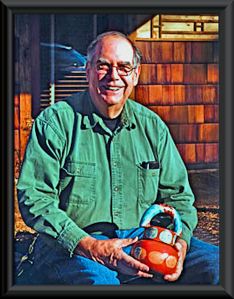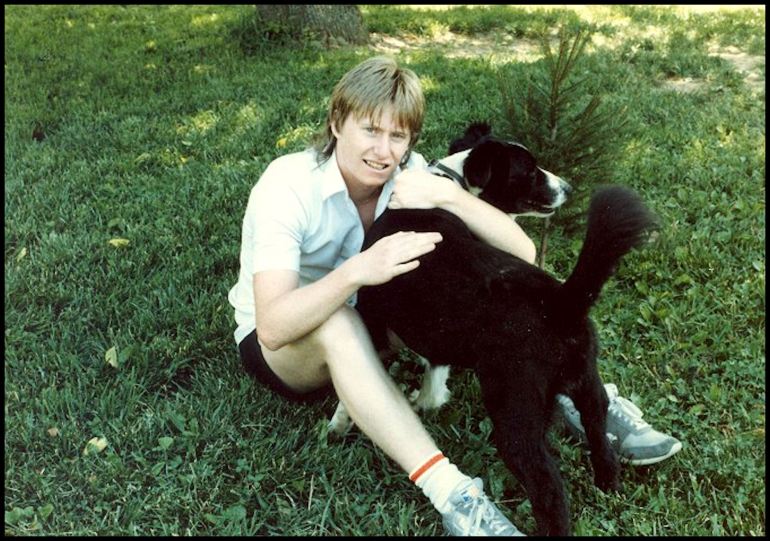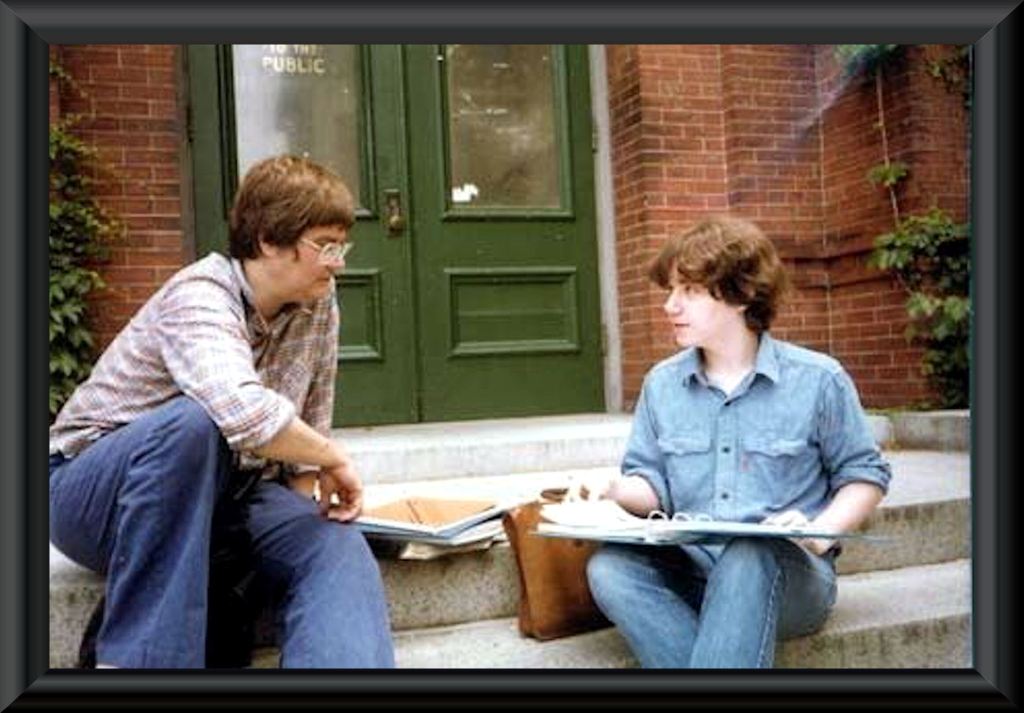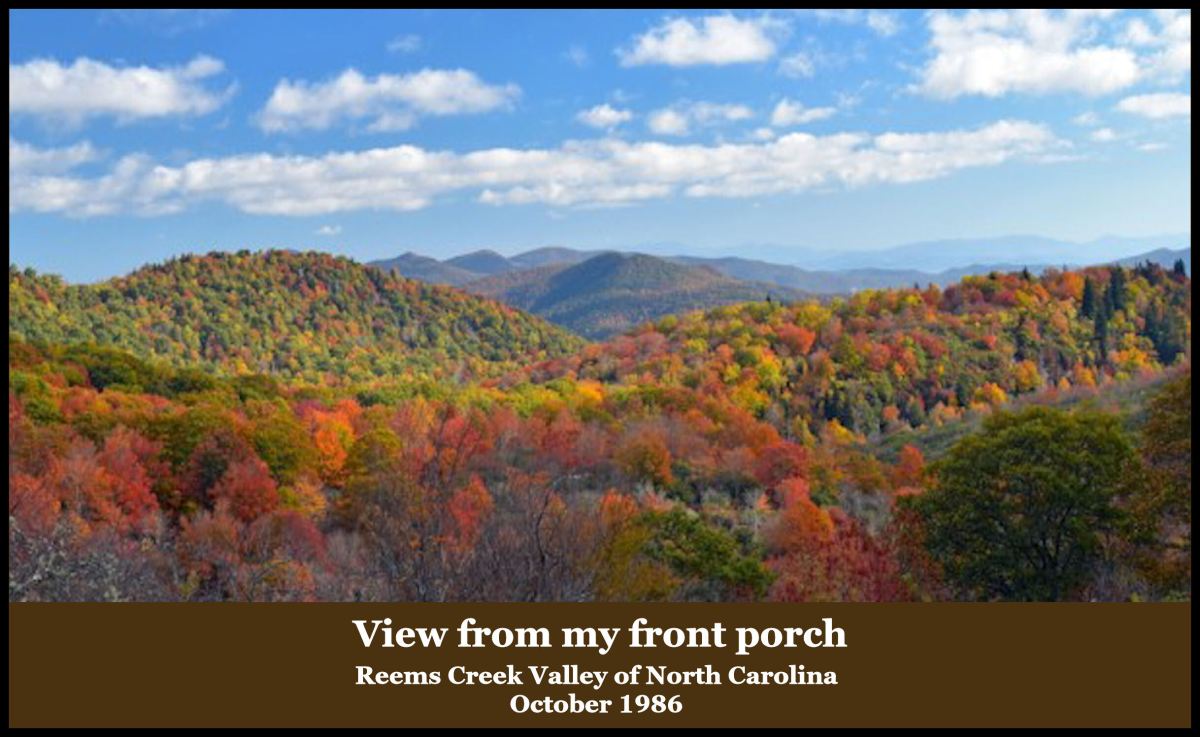by Richard L. Thornton, Architect and City Planner
The edited version of The Shenandoah Chronicles is now published online at its own website. To read this E-book go to Shenandoah Chronicles.
Life goes in circles. The National Geographic Society’s famous archaeologist-photographer-journalist, George Stuart, first became seriously interested in archaeology as a teenager, when he worked one summer at the excavation of Etowah Mounds, Georgia under the direction of Dr. Arthur Kelly and Dr. Lewis Larson. His wife, Gene, became interested in archaeology, while working as a teacher in the Cartersville, GA school system, near Etowah Mounds. I first became interested in archaeology as a sophomore at Georgia Tech, when I prepared an ink on Mylar plastic site plan for an ancestral Creek Indian town on the Chattahoochee River for Dr. Kelly. I then took an introductory course in anthropology from Dr. Larson. In 1995, I found myself suddenly single and unintentionally living in a townhouse within eyesight of Etowah Mounds. That sparked serious interest in my own Creek architectural heritage. The beat goes on . . .
When the devil came down to Jawja back in 2012, one of the many prevarications that he put into the mouths of an occult cartel, known as “Maya-Myth-Busting-In-The-Mountains, was that I was the arch-enemy of archaeologists. It was a time when about 85% of the anthropology graduates in the Southeast did not have a job in their profession. That situation really hasn’t changed much.
Several unemployed archaeologists set up websites, whose sole purpose was to slander me. Their basic premise was that I was the most evil and ignorant of all villains . . . a 21st century Atilla the Hun, determined to destroy all higher knowledge. The truth is that throughout the 1980s and 1990s, some of my closest friends were very famous archaeologists and historians in the Washington, DC area. That is how the Shenandoah Chronicles begin . . . not in Virginia, but in the Reems Creek Valley of western North Carolina on a beautiful autumn afternoon.

Snookered by two National Geo archaeologists
I had known George Stuart for over three years. In our first meeting, he presented himself as “a nature photographer for National Geographic” and never mentioned the Maya Civilization. While staying at his vacation home on the other side of the mountain, he had driven over to our farm to make photographs and interview us for a book about the Appalachian Mountains. That’s why we first met. At least . . . that’s how both of us thought we first met.

Even though, I had prominently on display in my living room, several Mesoamerican artifacts, George never mentioned that he was an archaeologist and an expert on the Mayas in any of the visits to my farm up to October 1986. In fact, the magnificent feature articles that he wrote on the Maya Civilization in the 1960s and 1970s are some of my most treasured possessions . . . but it never dawned on me to look to see who wrote those articles!
On a beautiful Saturday in October 1986, George dropped by to introduce his wife, Gene. He casually mentioned that Gene had become interested in archaeology, while teaching school in Cartersville, GA near Etowah Mounds. She had then attended the University of Georgia’s, Department of Anthropology, but didn’t graduate.
George also wanted to meet 17-year-old, Norwegian exchange student, Gert Erik Engelien. Gert was staying with us for a year. He had already finished high school in Norway, so was merely polishing his English . . . learning more about American history and cultural practices, while having plenty of time to charm the local mountain girls and be the star of the North Buncombe High School soccer team!

Originally, Gene just wanted to buy some goat cheese. They ended up staying until evening. We picked apples in my orchard then pressed them in my big cider press. We then set up lawn chairs in the front lawn, sipped fresh cider, enjoyed the magnificent view that you see above and discussed a wide range of topics. Late in the afternoon we barbecued ribs. A good time was had by all . . . but in the process my life would be radically changed forever.
I complained to George that the closest retail outlet for our cheeses was Chapel Hill, NC . . . 220 miles away. None of the cheese shops in Asheville would carry our cheese, yet we were selling well in New York City, Washington, Richmond and Charlottesville. Most of our profits were going to pay for shipping. He suggested that we consider moving to the Shenandoah Valley, where there was an ideal soil for dairy animals. It was only about an hour from Washington, DC. He also felt that my talents in downtown revitalization, planning and historic preservation would be far more appreciated in Virginia.
He was right. George soon put me in contact with a friend, who was an agricultural scientist, to help me decide where to relocate our dairy. After I moved to Virginia, he also put me in contact with his friends at National Geo, the Smithsonian Institute and the Library of Congress, who became the core of my architecture practice there.

Our conversation soon shifted. George and Gene were extremely proud of their son, David. He was a student at Princeton University, but 1984, he had become the youngest person ever to be awarded a MacArthur Fellowship. George also casually mentioned that his son was working with Linda Schele, a middle-aged woman in Mobile, Alabama, who he had first met at Palenque 15 years ago, when she was an art teacher. The next summer, she attended a workshop in Palenque that George was directing. She now had a PhD in Anthropology and was working with her son on translating the Maya writing system. George and Gene thought that they were going to be the ones, who would finally do it.
The keywords, Linda, Mobile and Palenque created a neural connection to memories that had been archived for 15 years. I asked George, “Is Linda’s husband named David and is he an architecture professor at the University of South Alabama? In 1970, did he get a grant to photograph Maya cities?”
George responded, “Yes . . . David and Linda Schele . . . How did you know that?”
I told him, “Well, I didn’t remember their last name, but did remember ‘David and Linda from Mobile.’ Were you skinnier and have black hair and a black mustache in 1970?” George laughed and said, “Yes!”
“George, do you remember a somewhat younger guy, who was with David and Linda?
He thought a bit then said, “Vaguely, I remember they said that they were the only Southerners here and so buddied up with their companion.”
I smiled, “And then you said that you were an archaeologist from South Carolina, so there were now four Southerners at Palenque. George . . . I was the younger guy with David and Linda! You never told us that you worked for the National Geographic Society.”

Confession time
George and Gene were totally confused. What was I doing in Palenque in 1970? I had to explain that I had eight years of college and had received the first Barrett Fellowship to study in Mexico. The famous archaeologist, Román Piña Chán and his staff at the Museo Nacional de Antropologia coordinated my travels and studies.
George displayed a look of astonishment, “You know Román Piña Chán? I have always wanted to meet him.”
I answered, “Yep, I was in his office several times and once went to lunch with him and his wife, Beatriz. My favorite time was the last time after he had been fired by the new Mexican president. He took me and his favorite female graduate assistant to a posh restaurant on the Paseo de la Reforma. We stayed there for about seven hours talking about everything, you could imagine.”
George apologized profusely. He had assumed that since I lived on a goat farm in the remote head of a North Carolina Mountain valley, I was not interested in intellectual matters and would know nothing about Mesoamerican civilizations. That is the reason that he only talked about farming and nature with me. After then he and Gene treated me as an equal . . . directly resulting in me being invited to numerous parties in Chevy Chase, Silver Spring, Arlington and Alexandria. Life is stranger than fiction.

The unknown future
Gene Strickland Stuart, 62, managing editor of National Geographic Society books and an expert on the Maya civilization of Central America, died of cancer August 8, 1993 at her home in Silver Spring. She was the author or co-author of several books on Mesoamerican Civilizations. At the time, I was undergoing intensive treatment in Atlanta after being poisoned by my estranged wife on August 3rd. I couldn’t go to the funeral.
Linda Schele, a onetime studio art teacher, who made a fateful vacation visit to Mexico in 1970 that turned her life upside down and helped revolutionize Mayan scholarship, died of pancreatic cancer on April 18, 1998 at a hospital near her home in Austin, Texas. She was 55 and widely known for her pioneering work in decoding inscriptions on Mayan monuments. She received a BA in Art Education from the University of Cincinnati in 1964. She was awarded a Doctorate in Latin American studies by the University of Texas in 1980.
George E. Stuart III, a staff archaeologist at the National Geographic Society, the senior editor of National Geographic Magazine and an authority on several Mesoamerican sites, died of cancer June 11, 2014 at his home in Barnardsville, N.C. He was 79. Stuart was a 1956 graduate of the University of South Carolina held a doctorate degree in Anthropology from the University of North Carolina (1975). He wrote numerous articles on the Maya civilization and authored four books. I could have easily driven up to Barnardsville to attend his funeral, but didn’t know of his illness or death until after the funeral.

Gert Erik Engelien at age 17 wanted to become a sports journalist. Instead, he has had a very successful career with Securitas, AB one the world’s largest, if not the largest, security agencies. Until recently, he was president of the company’s new office in Australia, but has been promoted to be head of Human Resources for Securitas, Norway . . . where the company originally began. It is now headquartered in Stockholm, Sweden.
The National Geographic TV Channel was the first organization to contact me about shooting a TV program on the Track Rock Terrace Complex in Union County, Georgia and the Maya immigrations to Georgia. That was in January 2012. However, the young woman, who called me was so low on the totem pole that she did not know who George and Gene Stuart were.
The US Forest Service refused to issue National Geo a filming permit “because it was a North Carolina Cherokee Sacred Heritage Site” then some Cherokee tribal officials made threatening phone calls . . . claiming that the stone terrace walls were the burial places of great Cherokee chiefs. I told the girl that the Cherokees were nowhere around,when the Track Rock Complex was built a thousand years ago. Track Rock Gap was in Creek Indian territory until 1784, when the United States secretly gave North Georgia to the Cherokees in an attempt to weaken the Creek Confederacy. The Creek Confederacy declared war on the United States in 1790, when its leaders learned about the massive land theft. She didn’t believe me and so National Geo walked away from the project.

The History Channel said “to heck with you” when the US Forest Service told them they couldn’t film the Track Rock Terrace Complex in Georgia, because the Cherokees in North Carolina objected. Geologists and archaeologists at the University of Georgia refused to cooperate with the History Channel. In October 2012, scientists at the University of Minnesota found a 100% match between attapulgite mined in Georgia and the Maya Blue stucco at Palenque! The program about the immigration of Maya commoners to Georgia premiered on December 21, 2012. It has become the most watched one hour program ever on the History Channel, since being posted on Youtube.
Life is indeed, stranger than fiction!

Richard, I think we need to pick up the momentum here. It is high time the facts and circumstances are revealed on this blog. The trackrock terrace complex is critical to our understanding of human land occupation for more than apparent reasons. We need to expose the facts because they matter to our current life functions. Examples are: 1. Mayan culture holds knowledge of cyclical solar nova disasters. 2. These cultures etched in stoned using their form of information that may be understood by future humans a coming disaster via the sun. 3. The power and extent of this disaster and how to prepare to survive its rath. 4. Many structures built to survive the disaster. Imbedded in the mountains. Petroglyph symbols leading to caves and underground shelters living quarters when the disaster happens. 5. Alien contact that protects those who choose accept a world of humans that remain natural and uncompromised by other non humans.
Am I on track Richard?
LikeLiked by 1 person
Almost all the petroglyphs are from Bronze Age Sweden – 2000 BC – and can be seen on rock faces near Nyköping, Sweden. The translation chart that Lund University’s archaeology and historic preservation department sent me describes them as astronomical, calendrical and navigation symbols. We need to get Track Rock out of the control of the US Forest Service and into the stewardship of the National Park Service so professional archaeological work can be done there and the destructive vegetation cleaned out.
LikeLiked by 1 person
Richard, The electro- magnetic system built most likely by very ancient people could have been rediscovered by these explorers who left those stone markings going up to a highly important meeting location. Yu- pa- ha means what again? Thanks for the articles. The sound “U” traces back to the area of the Euphrates river for multiple groups of Native peoples.
LikeLiked by 1 person
Yupaha either means Horn/Antler River or Horn Lord in Itza Maya. Before Hispanization, the word could have been either Yupa-haw or Yupa-ahaw.
LikeLiked by 1 person
The Itza’s term of “Horn Lord” could be a connection to who the Itza and Navaho called Anasazi who left artwork of horned beings.
LikeLiked by 1 person